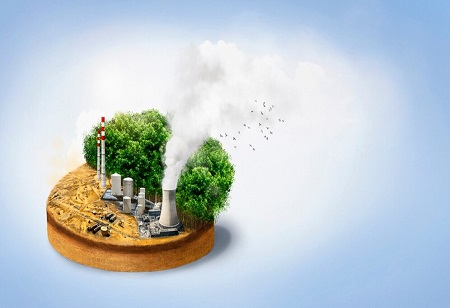
Reports show that Indian cities discard solid waste ranging up to 42 million tonnes every year that are being put to good use with Waste to Energy initiatives taken by the government. Waste to Energy (WTE) is the buzzword that is currently disrupting the energy production sector globally. We can witness the emergence of advanced WTE operations in the form of gasification, incineration, biogas, landfill gas, pyrolysis, food waste, depolymerization, medical waste, anaerobic digestion, agricultural waste, fermentation and others that are changing the perception towards energy production across the world.
“In India we can see a lot of energy production in the rural areas that are creating a lot of job opportunities for the population of the country. Energy is being generated from various sources that are non-recyclable in nature”, mentions Jaipal Reddy, Founder Director, Hycons Technologies.
A number of technologies are in use around the world for WTE purposes that are slowly changing the perception towards waste for the people.
WTE technologies have been developed and are being implemented for decades now. One of the most notable among them is the 'moving grate, mass burn' technology that consists of a moving grate to burn all Municipal Solid Waste (MSW) from a feed shaft to the ash pit. There is absolutely no requirement for pre-treatment or sorting of materials that allow the whole setup in the accommodation of huge quantities of waste of different compositions and calorific value. The technology for MSW treatment has been in use for over a century and the technology has got better with time.
Apart from MSW treatment, there are various other WTE technologies in use in the market today. 'Fluidized bed' is one of them that comes as a cleaner and efficient technology that has the ability to convert waste to electricity. Here the system requires a uniform kind of waste to operate on and is a little more on the expensive side of things. Furthermore, 'Gasification' of plants uses plastics and several other organic solid waste materials in a chemical conversion process that is required to burn synthetic gases at very high temperatures.
Combustion of MSW grew in the 1980s in the US and by the early 1990s, the US had combusted more than 15 percent of all MSW that was available. Majority of the non-hazardous waste incinerators were involved in the process of recovering energy and had also installed pollution control equipment. The US currently has a huge number of MSW treatment plants and is one of the pioneers of this technology in the world.
We can also witness that there are several wastewater treatment plants (WWTP) that consists of on-site anaerobic digesters for the treatment of sewage sludge. In this process the solid particles are separated during the treatment process itself. But many WWTPs do not have the technology to make use of the biogas that is getting produced, and flare it instead. Of the 1,269 wastewater treatment plants that are installed in the US and have the anaerobic digester, only around 860 are have the ability to put the produced biogas to use. Biogas has been one of the most reliable renewable sources of energy and that has been a major USP for it. The installation of biogas plants is being facilitated by government across the world though feed-in-tariffs, granting subsidies along with schemes of tax relief. “Biogas is inherently renewable, on the contrary to fossil fuels, because it is generated from biomass, and this source is practically a reserve of the solar energy via photosynthesis process. Anaerobic digestion (AD) biogas will not only enhance a country's energy basket status but also contribute significantly in conserving natural resources and protecting the environment”,Teodorita Al Seadi, Author, Biogas Handbook.
Various nations are trying to tap into the WTE market and create economically sustainable energy sources with the help of advanced technologies. However, they have observed that mere licensing of projects is not enough to create environmentally and economically sustainable solutions. A lot of involvement from trained and experienced professionals along with defined government initiatives must fall in place in order to create value from WTE projects. According to various market reports, we can see that major cities across the world are running out of landfill sites, which is exactly why waste management has become imperative. “WTE is only one part of a comprehensive, waste management plan. Projects should begin with waste minimization as a public policy, followed by waste recycling and WTE incineration, and ending with the remaining ash delivered to local landfills”, mentions Edwin Yuen, Senior Private Sector Operation Specialist at the Asian Infrastructure Investment Bank.
The installations of WTE systems are providing highly valuable source of renewable energy, but the greatest benefit of WTE today can be understood clearly from its ability to convert waste into ash that reduces up to 90 percent the volume of waste going to landfills. This waste reduction in turn helps contain the amount of methane emissions taking place from the landfills with decomposition of organic materials. According to a recent KPMG report, these issues are especially important in Southeast Asia, where the urban population is projected to rise to nearly 400 million by 2030 requiring significant investments to cope with the rapid increase in garbage. In some areas such as Singapore, the relative lack of land for landfills is also a key factor in adopting WTE solutions.
With widespread adoption of WTE technologies across the world, experts are of the opinion that people must be provided with the knowledge about the viability of these projects. Proper planning and development of infrastructure is required to create environmentally sustainable projects. Emphasis on the supply chain management and project management for WTE projects must be put in order to bring about the economic feasibility in the years to come.
We use cookies to ensure you get the best experience on our website. Read more...